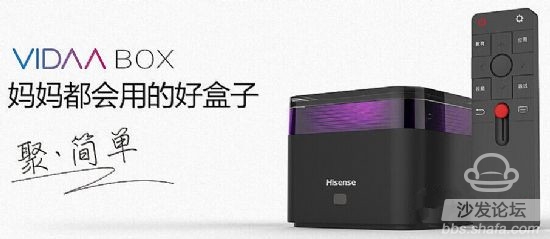Smart TV Internet +: Do you spend more money on it?
LED street lamp refers to the street lamp made with LED light source, which has the unique advantages of high efficiency, safety, energy saving, environmental protection, long life, fast response speed, high color rendering index, and is of great significance to urban lighting energy saving. Led Road Light,Led Off Road Lights,Led Roadway Lighting,Cob Led Road Light Yangzhou Heli Photoelectric Co., Ltd. , https://www.heli-eee.com
The smart TV industry has engaged in Internet+ for at least three years. In particular, the strategy of alliance and pairing between TV manufacturers and Internet content companies in 2014 was a major attraction. For example, Tencent Games cooperates with TCL and Konka, Youku and Hisense, TCL cooperates with iQiyi, and Hunan Satellite TV. However, in the end, these so-called industrial ecological integrations have all become “painting cakes and hungerâ€.
Because, in the absence of a mature and effective profit model, only see the actual situation of input, not output, so that the partners are only willing to come up with "existing" material to "spread". The “content†that is truly customized for smart TVs is almost zero except for LeTV’s own money to shoot 4K movies and TV series. This is not a family, and there is no real interest bond. Just relying on a smart cake that looks like a delicious "future," Internet + TV can't really "get hungry."
These problems, Xiaomi also clearly see in the eyes. Therefore, Lei Jun announced that it will use 1 billion U.S. dollars to "pick" content ecology. Moreover, this one billion US dollars is only mainly aimed at video (a rival LeTV advantage) in one area. Even Xiaomi moved out of his earliest angel investor, former editor-in-chief of Sina, and Chen Yu-lai, whose resources in the industry are extremely rich, to carry out the "eco-content system." - Xiaomi only hopes that real money, silver, and deep-water contacts can really create an "interoperable ecological chain."
Money is not for everyone
Millet Chen Hao six months of transcripts, recently sunning: In the video site based on the major league, the total volume of genuine video content of the millet TV, box access broadcast control platform reached 18,051, millet mobile phone for 33,213. The number may seem large, but it is difficult to say that the competition is effective.
One key data is that the one billion US dollar spent only half. why? The answer is nothing less than three aspects: 1. Problems with broadcast control platforms, 2. Problems with business models and sharing, 3. Some video platforms have already formed alliances with opponents, or that there is no shortage of money at the moment (although there is a loss, but the wind in the pocket is invested Gold is still a lot).
“The fierce competition in the smart hardware industry is far beyond my imagination. Some of the original good friends have also become a positive competitor,†Chen said. The difficulty is greater than expected, and the demand for banknotes is limited. This is the conclusion of Xiaomi's seven-month practice of disbursing money.
However, after all, the money, red grandfather Mao is the easiest element to reach the common value structure of content, platform and hardware. So, Hisense also came.
Liu Hongxin, chairman of Hisense Electric, said that Haishi Cloud started a large-scale A-financing plan from now on, using financial capital as a means of incitement and competition, participating in Internet businesses such as video service, TV shopping, health care, and online big-screen games, focusing on television. This large screen forms an ecological chain and enhances core values.
This is simply a replica of Xiaomi's strategy and the result of the enlargement. Of course, Hisense also has its own advantages, with 10 million activation of smart TV platforms. It is expected that the number of new users will increase from 5 million to 8 million in 2015. Compared with the activation of TV sets with 6.7 million TV boxes, the scale advantage is obvious.
For the investors, there may be three mentalities: 1. Lao Tzu is not short of money, cooperation can be, no shares; 2. Xiao Mi, Hisense eats two, the days are really comfortable; 3. Rely on one to the other to start the price ... wherever In this case, at least there will be no content companies that refuse to “open up†to Hisense, or more other smart TV platforms. However, Xiaomi’s difficult road ahead is likely to be the best way for the entire industry—those with the highest risk-related costs—millet revenues are hard to come by.
The last question is: How much does Hisense have to invest? According to the profitability level of Hisense TV, the three-year profit is enough to exceed the 500 million US dollars Xiaomi has spent. - Because Xiaomi has proved that it is not easy to spend money on the road to ecological integration. Therefore, if you are watching customers, you should not worry about the problem of money for Hisense, the color TV company with the first profitability in the country and the third largest in the world.
Xiaomi and Hisense entered each other and it was really on the bar.
Take money to save the ecological: Xiaomi and Hisense tip to Maimang. In addition, Liu Hongxin, chairman of Hisense Electric, has not forgotten to add “Actively driving the intelligentization, mobilization, and cloud development of Hisense’s products, and making everything possibleâ€: To know the core value of the millet platform is the mobile phone. Hisense has also highlighted the concept of mobility, which is far more interesting than previously citing Xiaomi's “Uolong Color TV No. 1â€. 
However, in the market share of hardware, Xiaomi, Leshi, and Hisense are bound to be one more and one less.
Compared Xiaomi and Hisense, you can find that Xiaomi’s advantage is the mobile phone, and the sales volume of the box is also good (first in China, about 5 million in 2014). Hisense's advantage is television. Not only does it have a large sales volume, but it also has a rich history. However, Hisense's mobile phone is weak and the box is also running slow. At least two beats in the market. According to the market share of color TVs, Xiaomi's box shares the role of smart TV fans in traditional TV companies. Millet's 6.7 million boxes and color TV platforms, and at least 500,000-700,000 boxes, have robbed Hisense's historical customers.
Therefore, in 2015, Hisense clearly enhanced the box product line, while strengthening its online sales strategy, restructuring e-commerce platform and team, and actively integrating online and offline O2O business. These actions have the inevitability of future strategic adjustment of the enterprise, as well as the tactical significance of attacking Xiaomi and LeTV. Among them, the success or failure of the box product line is extremely valuable for retaining Hisense's massive historical customer resources.
Hisense said that in 2017, the number of intelligent platform user activations will reach 30 million—this number cannot be entirely based on smart TVs. Because one of Hisense smart TVs has a huge sales volume, it increases the activation amount of 20 million for three years, which is equivalent to twice the current 10 million. Even if the sales volume of Hisense smart TV reaches 100%, almost 90% of the activation is required. Rate - Both of these data are difficult to achieve. Second, even with the purchase of Hisense TV, consumers can still purchase millet boxes—especially the owners of old TVs. By choosing better and more advanced boxes to improve the smart experience, it is becoming a fashion. In other words, Hisense's current 10 million users will also have a considerable number of customers converted into boxes in the next three years.
Therefore, the box is the biggest variable for the scale of Hisense Smart Platform. Forecast data show that in 2015, the sales volume of domestic smart boxes will increase to 20 million units, and the activation rate of boxes will be much higher than that of ordinary smart TVs. This will be another group of customer resources that smart companies must seize.
This shows that the surface of the Shanghai letter and millet is an ecological dispute, the essence of competition is the hardware platform sales dispute. The overall war of the three lines of mobile phones, boxes and TVs, the overall strength is still not conclusive. The content of spending money is just to win the platform and provide popularity - at least until there is a clear business model for profitable smart TV content, this will not change. 